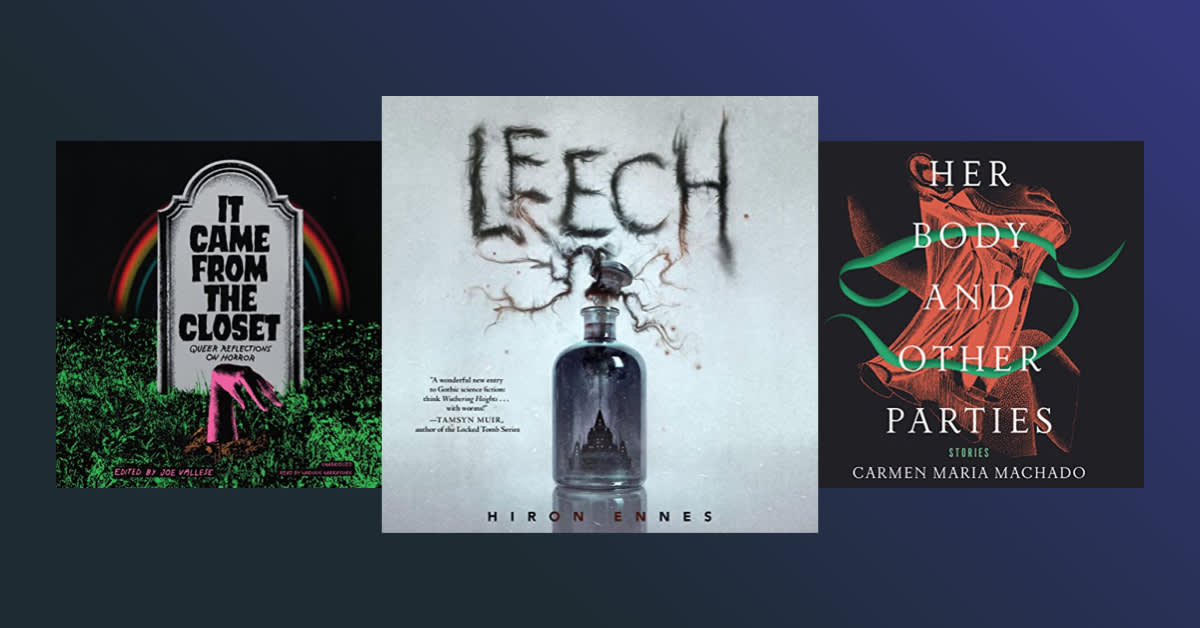Before “queer” evolved into all it is today—a multidimensional and undeniably modern term that unites individuals across a diverse spectrum in their lived opposition to heteronormativity—it was more or less a synonym for what we call “uncanny.” Now, love him or hate him, Sigmund Freud defined the uncanny as the sensation that occurs when our earliest anxieties come back to haunt us once again, which perhaps explains why queerness and horror go together so well. Because, as tethered as they may be to what society defines as scary, our childhood fears challenge us in inherently personal ways.
Growing up as a queer, goth outsider is nothing short of lonely. From a young age, many of us were attracted to strange and spooky stories for reasons we could not quite comprehend. Yet, as Joe Vallese’s brilliant new anthology, It Came from the Closet, recently reminded me, none of us were as alone as we imagined in feeling a mystifying attraction to Hollywood’s Halloween icons. In fact, the formative proximity that many of us felt for one ghoul or another is one of the things that continues to connect us as a queer community today, providing a framework for exploring the sensations of otherness in eternally titillating ways.
It Came from the Closet
By Joe Vallese - editor, various authors
Narrated by Graham Halstead, Aven Shore, Aida Reluzco, Mark Sanderlin, Tori Barron, Krystal Hammond, Daniel Henning, Ron Butler, Hope Newhouse, Lindsey Dorcus, André Santana, Joel Froomkin, Mike Cooper, Em Grosland
From flashing fits of lightning to eerie organ pipes, disturbing sets of doppelgängers, and blurry divides between who is alive and who is … less-so, gothic literature lives for the drama of otherness. Likewise, with its winding underground labyrinths and hidden trap doors, no gothic novel is complete without at least one well-guarded secret at its core.
Revolving around one man’s hideous attempts to conceal the corruption of his soul from the light of day, The Picture of Dorian Gray is one of the most infamously queer-coded novels in all of English literature. Its homoerotic undertones are so palpable, in fact, it was cited as evidence against Oscar Wilde during his sodomy trial in 1895. And while Basil Hallward is surely attracted to his muse for his handsome features, perhaps the horror of hiding one’s true self endures as the most queer element in this iconic novel.
Newly released in audio for the first time since its 1978 debut, Andrew Holleran’s haunting Dancer from the Dance follows Malone, a closeted Midwesterner, as he steps out under the anonymous cover of New York City’s nightlife scene to tango with the ups and downs of achieving sexual liberation. From dance hall beats to party drugs, the novel covers everything that goes bump in the night, zombies included, and becomes all the more ominous to listen to when we revisit its intoxicating post-Stonewall scenes with our modern understanding of the imminent AIDS epidemic in mind.
Same-sex attraction and vampire stories are no new invention. (Might I recommend my favorite sapphic classic of all time, Carmilla by Joseph Sheridan Le Fanu?) Still, as you can imagine, the rapid spread of HIV throughout the ’80s and early ’90s made the very idea of blood more frightful to the public imagination than ever before, and tethered its significance to discussions of the gay community indefinitely.
Tall, dark, and handsome, Count Dracula always had a way of seducing the male characters as well as the female in Bram Stoker’s classic, first published in 1897. However, Francis Ford Coppola’s 1992 film adaptation brought the queer-coded horror of the original text to a microscopic level. It features scenes of foreign cells rampaging victims’ blood streams, styles vampire bites after the distinct look of Kaposi’s sarcoma lesions, adds another handsome dandy to the queer canon (thanks, Gary Oldman), and above all: reminds viewers to weigh the risks of giving in to temptation.
Dracula [Audible Edition]
By Bram Stoker
Narrated by Alan Cumming, Tim Curry, Simon Vance, Katherine Kellgren, Susan Duerden, John Lee, Graeme Malcolm, Steven Crossley
Count Dracula's canonical appearance—well-mannered yet oddly transgressive—reflects the enduring allure of subverting the status quo, and loops his vampiric visage in with the queer icons that both precede and follow him. From 19th century dandies such as Lord Byron and Oscar Wilde to contemporary icons including Edward Gorey and Elvira, fashion has long been divisive in challenging gender norms, and queer influencers sure know how to keep gothic glamor alive, which is why Halloween is often celebrated as a sort of “Gay Christmas.”
My love for gothic storytelling was first renewed with contemporary vigor by Carmen Maria Machado, whom I revere as today’s reigning queen of queer horror. Her short story collection, Her Body and Other Parties, as well as her genre-bending memoir, In the Dream House, are both unforgettable listens that will surely change the role gender plays in our discussions of domestic suspense indefinitely.
Likewise, it has been an absolute delight to discover which literary monsters first sparked light-bulb moments for today’s leading creators. Thanks to the rich reciprocity between horror and queerness, I look forward to the release of listens as bone-chilling as Hiron Ennes’s Leech and Gretchen Felker-Martin’s Manhunt each year, waiting in anticipation of the shivers they’ll send down my spine with their subversive skills in storytelling.
Nothing reassures me more that the futures of queerness and horror will remain entwined, dissecting all that drives our feelings of discomfort for the eternity of their partnership. Personally, I could not be more thrilled to discover the haunting listens that await.




![Image for Dracula [Audible Edition]](https://m.media-amazon.com/images/I/81iTqQPxj7L._SL800_.jpg?w=384)







